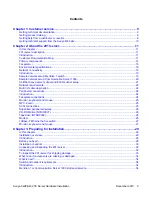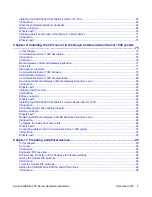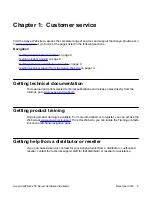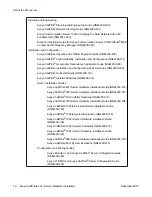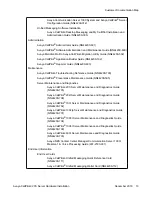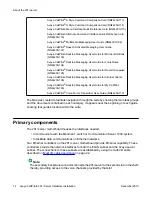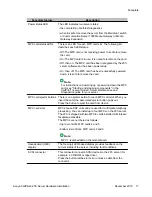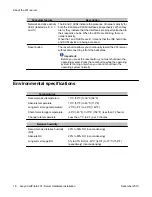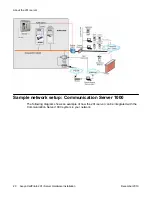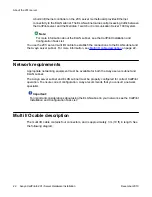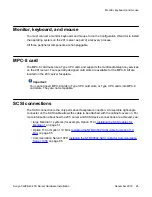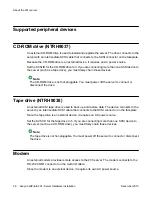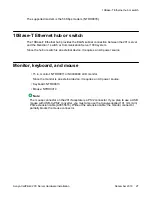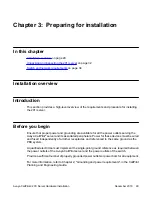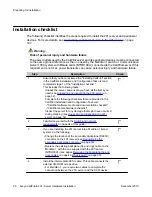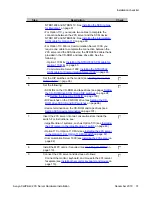
Faceplate feature
Description
Power status LED
The LED indicates two server states:
• the completion of self-test diagnostics
• when it is safe to remove the server from the Meridian 1 switch
or Communication Server 1000 Media Gateway or Media
Gateway Expansion
MPC card status LEDs
There is an LED for each MPC card slot. The following list
describes each LED status:
• Off: The MPC card is not receiving power. It is safe to remove
the card.
• On: The MPC card is in use. It is not safe to remove the card.
• Off, then on: The MPC card has been recognized by the 201i
server software and has been powered up.
• On, then off: The MPC card has been successfully powered
down. It is safe to remove the card.
Note:
For instructions on powering up or powering down the MPC
card, see "Starting and stopping components" in the
CallPilot* <server model> Server Maintenance and
Diagnostics guide for your server.
MPC card ejector buttons There is one ejector button for each MPC card slot. When you
insert the card, the associated ejector button pops out.
Press the button to eject the card from its slot.
MPC card slots
MPCs house DSP units and are used for multimedia telephony
processing. You can install up to four MPCs on the 201i server.
The 201i is shipped with two MPC-8 cards installed. All slots are
faceplate-accessible.
The MPCs are numbered as follows:
• top row of slots: MPC cards 4 and 5
• bottom row of slots: MPC cards 2 and 3
Note:
MPC 1 is embedded on the motherboard.
Hexadecimal (HEX)
display
The four-digit LED-based display provides feedback on the
current status of the server, including fault conditions.
SCSI connector
This connector connects SCSI devices to the 201i server (for
example, a CD-ROM or tape drive).
Press the button latches to lock or unlock a cable from the
connector.
Faceplate
Avaya CallPilot
®
201i Server Hardware Installation
December 2010 17

